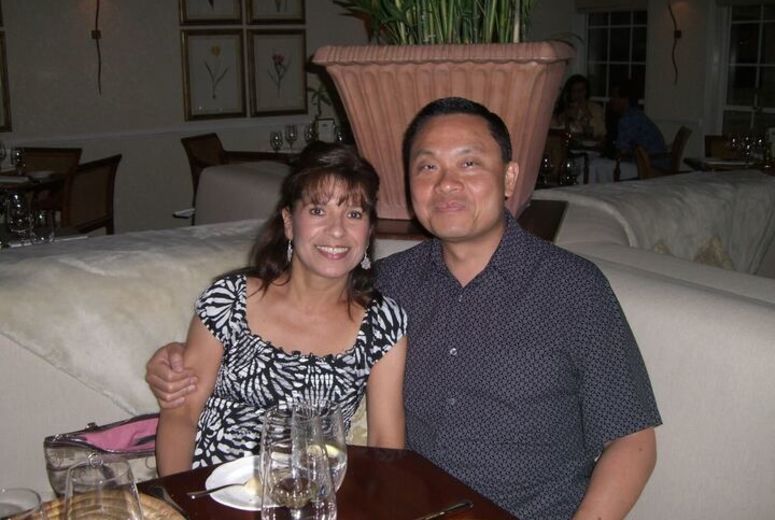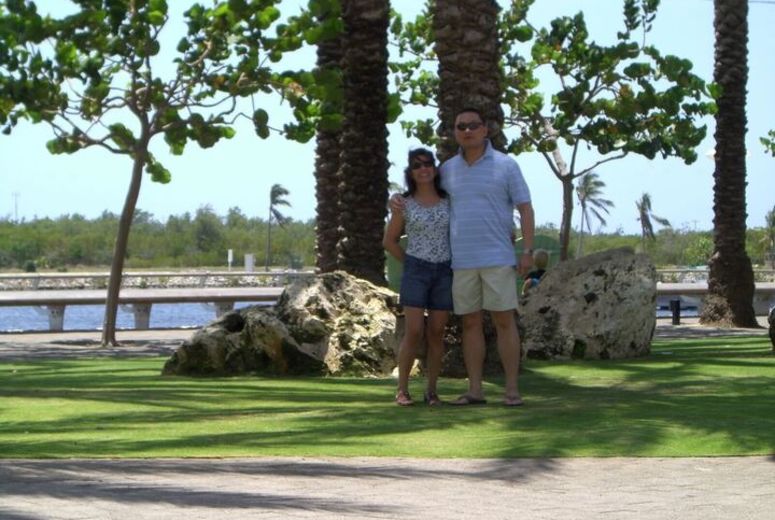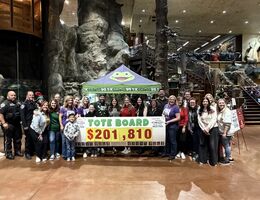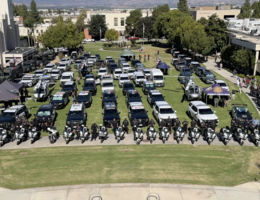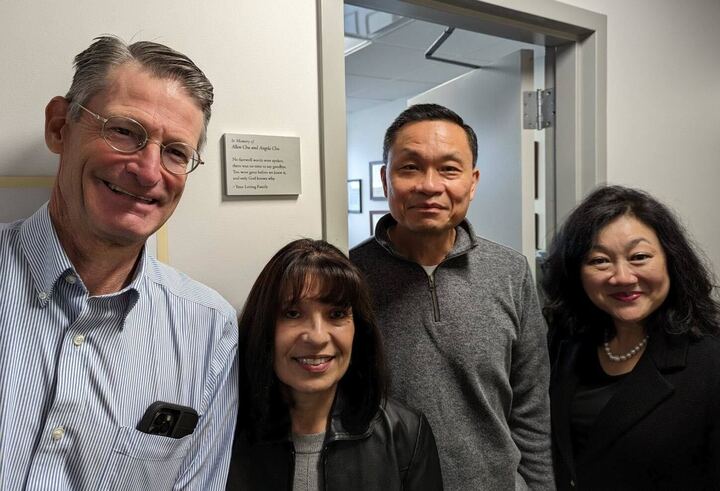
Grace Chan recovering at Loma Linda University Medical Center from a mitral valve replacement.
When Grace Chan looks back on the past few years, it feels like a whirlwind of hospital rooms, life-changing diagnoses, and moments where the future was uncertain. In an impossibly short period of time, she faced a kidney tumor, heart disease, and a life-threatening brain aneurysm. But through every crisis, one constant remained, Loma Linda University Health (LLUH) and its pioneering robotic surgery program.
As LLUH celebrates 20 years of robotic surgery, Grace’s journey stands as a testament to the power of innovation, expertise, and compassionate care.
Grace’s journey began with what seemed like a routine visit to her primary care physician. She had no reason to suspect anything was wrong, until tests revealed blood in her urine. Further scans uncovered a mass on her kidney. The good news: it was benign. The bad news: it had to be removed.
Unwilling to settle for anything less than the best, her husband, Alex, began searching for a specialist who could perform a noninvasive, robotic-assisted procedure. His search led him to Herbert Ruckle, MD, chair of urology at LLUH, a nationally recognized expert in robotic kidney surgery.
Ruckle meticulously reviewed Grace’s scans, an important step that was overlooked by other institutions. He had not only reviewed Grace's tests to understand the details of the cancerous mass, but also had noted physiological uniqueness in Grace that needed to be considered in the surgery.
"From the moment we met Dr. Ruckle, we felt confident that we were in the right hands," Alex said. "He was extremely knowledgeable and professional on his treatment plan and prognosis. He walked us through the robotic procedure, and we knew this was where Grace needed to be."

Ruckle (left), Grace, Alex, and Judy Evans, BSN, MBA, Department of Urology Group Administrator
The robotic-assisted surgery was a success. With smaller incisions and a faster recovery time, Grace was soon on her feet again. She and Alex were deeply impressed, not just by the technology, but by the warmth and expertise of the LLUH team.
As if a kidney mass weren’t enough, the most terrifying moment of Grace’s journey came unexpectedly when she collapsed in her own home.
A brain aneurysm had ruptured. It was a medical emergency of the highest order.
As paramedics loaded her into the ambulance, the Los Angeles native had just one request: "Take me to Loma Linda."
It was a plea spoken out of trust, built from experience. LLUH had saved her before, and in this moment of crisis, it was where she wanted to be.
But LLUH was too far. Alex consulted LLUH faculty who said the one-hour ambulance ride was too long and the aneurysm needed to be treated immediately. The paramedics had no choice but to take her to a local Los Angeles hospital. She underwent emergency surgery there, but even after the procedure, she continues her neurology follow-ups at LLUH, staying under the care of the doctors she had come to trust.
After such a positive experience, LLUH became their first choice for care. So when yet another health crisis struck, they knew where to turn.
Grace had been on medication when she went in for what should have been a routine dental appointment. But soon after, something felt off. At first, it was subtle; fatigue, a lingering feeling of unease. Then, her condition deteriorated.
Doctors diagnosed her with endocarditis, a dangerous infection of the heart’s inner lining. The infection had damaged her mitral valve, a critical valve that helps regulate blood flow through the heart. Surgery was the only option.
Once again, robotic surgery at LLUH became her lifeline. Under the hands of Joshua Chung, MD, department chair of cardiothoracic surgery, Grace underwent robotic mitral valve surgery, a cutting-edge procedure that allowed for extreme precision with minimal invasion. Unlike traditional open-heart surgery, which requires cutting through the breastbone, the robotic-assisted approach meant smaller incisions, less pain, and a faster recovery.
"The surgery was incredible," Grace said. " I healed so much faster than I ever thought possible."
From her robotic kidney surgery to her robotic mitral valve repair, each procedure was a step toward healing, allowing her to recover faster and return to the life she loves.
"Looking back, I can’t believe I went through all of that," Grace said. "But I did. And I’m still here."
As LLUH celebrates 20 years of robotic surgery, Grace stands as living proof of the program’s impact. Her story is not just about survival — it’s about the expertise, technology, and compassionate care that make survival possible.
Minimally invasive and robotic surgery is no longer the future. It is now. Explore options at Loma Linda University Health.

